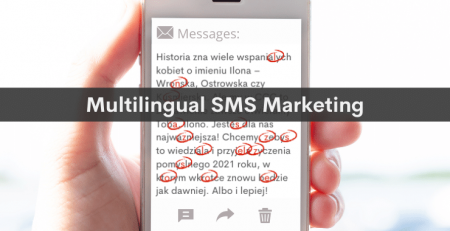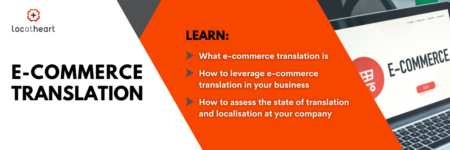Translating product descriptions – international SEO in the e-commerce industry, or why is it best not to use machine translation
When brands enter new markets, they have to face numerous challenges – including how to approach the subject of localisation. Although there are certain solutions which may be tempting in terms of optimisation and price, it is always better to work on selecting and using them with experts – otherwise, we may have to face serious long-term losses, in terms of both finances and reputation. Why is localisation of product descriptions so significant? What makes working with specialists the best choice? The answers to these and many other questions can be found in our article.
What does a product description look like?
It would seem that everyone can see what a given product is like. In reality, however, not many people like buying a pig in a poke. Every single shortcoming of a product description may result in a significant drop in sales volume. In order to stand out from the competition, you have to present the unique qualities of your products in a comprehensible and organised way. The product description itself is typically diversified – we can distinguish the following parts:
Naturally, the elements listed above are not always used all at once – a description can be shortened or extended depending on a given platform’s requirements or specific guidelines provided by the client; however, it is a verified model that forms the basis for most texts of this type used in the industry.
Why is a professional translation of product descriptions so significant?
First of all, a product description could be perceived as a brand’s business card – it is a litmus test that checks how a given company treats its communities and how much it cares about quality. If a description is translated automatically – so sloppily at best and incomprehensibly at worst – the recipient gets a clear message: “We don’t care, we economise on everything and consumers’ comfort is not important to us.”
Such an approach often damages the global prestige of a brand which, after all, wants to appeal to foreign customers. At times, using machine translation produces downright disastrous effects – some real-life examples can be found in our article on how linguistic errors impact business.
Second of all, unprofessional translation can discourage a potential buyer altogether or simply not reach them at all – search engine algorithms do not accept compromises; therefore, if a given text is not suitably optimised, its visibility on the internet will suffer severely. To learn how much SEO (Search Engine Optimisation) influences sales results, read our analysis.
What makes working with specialists the best choice?
Taking into account all the factors described above, choosing not to use machine translations that produce very uncertain results and establishing a cooperation with a localisation agency seems to be the best choice – and rightfully so. No text is suspended in a void; moreover, apart from quality control (LQA), skilful use of key phrases as well as expert time and financial optimisation are also extremely significant.
First of all, if a product is to be visible online and attract customers to a website, it is necessary to select the right key words and phrases, so that they are consistent with the most popular slogans used in a given region and compatible with the search method itself – which requires specialist knowledge and vast experience.
Second of all – contrary to what may seem to be true – long-term cooperation with a translation agency helps save financial resources. How? With the use of translation memories (those belonging to an agency or to a client), the amount of work of a linguist is gradually reduced, which results in lowers costs.
If a client runs an online shop, they may prepare specific description elements which will be saved in their database after translation and then uploaded automatically whenever there appears a new text with identical phrases. Obviously, those elements need to be adequately prepared – context may be very different, and so may be grammatical requirements (e.g. auxiliary verbs used while describing THIS jacket are going to vary from the ones used to describe THESE trousers).
Luckily, experts at locatheart know exactly how to handle these types of situations and are willing to help at every single stage of the localisation process. To learn more about working with translation memories in the Trados software, read our article.
What should you take care of while establishing cooperation with a localisation agency?
Translation agencies, such as locatheart, have a vast experience in preparing descriptions and are perfectly capable of taking care of many localisation aspects on their own; however, in order for this process to run even more smoothly, linguists have to be familiar with the client’s overall vision, as well as their specific guidelines.
Therefore, it would be a good idea to prepare and send a set of reference materials to the agency – not only information regarding the products themselves, but also guidelines on the writing style, formality and creating the brand’s image (for example, in the form of a style guide and a brandbook).
Equally helpful would be a glossary with terms and slogans used previously (it helps maintain consistency, which is an important factor in strengthening trust in the brand). Any comments are welcome, and they will all be taken into account while working on descriptions – which is why it is important to mention every single detail, no matter how insignificant it seems.
To learn what the job of linguistic experts is, read the article about our in-house team.






Leave a Reply